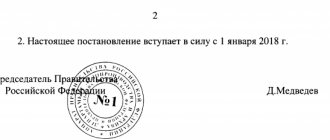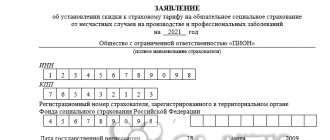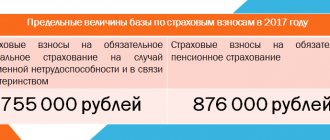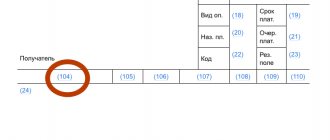Types of insurance premiums
There are four types of insurance premiums.
- The first type is pension contributions. They are divided into contributions to the insurance pension and contributions to the funded pension.
- The second type is medical contributions.
- The third type is contributions to compulsory social insurance in case of temporary disability and in connection with maternity. Using these contributions, the Social Insurance Fund (SIF) pays sick leave benefits and maternity benefits. The unofficial name is “sick leave” contributions.
- The fourth type is premiums for insurance against industrial accidents and occupational diseases. Their unofficial name is “injury” contributions.
Fill out, check and submit all contribution reports online Submit for free
In 2009 and earlier, the first, second and third types of insurance contributions were included in the unified social tax. In the period from 2010 to 2016, they were regulated by Federal Law No. 212-FZ dated July 24, 2009 (hereinafter referred to as Law No. 212-FZ). Starting in 2021, they are regulated by Chapter 34 of the Tax Code.
The fourth type - contributions “for injuries” - are regulated by Federal Law dated July 24, 1998 No. 125-FZ (hereinafter referred to as Law No. 125-FZ) and Federal Law dated December 22, 2005 No. 179-FZ.
What are insurance premiums and what are they?
Insurance works like this: a person decides to take out a policy, pays money - one-time or periodically, and when an insured event occurs, he receives the compensation prescribed by the contract.
But this is not always a voluntary procedure. In Russia there are several types of compulsory insurance contributions:
- for pension insurance - based on these payments, the pension will subsequently be formed;
- for health insurance - these payments allow you to be examined and treated under the compulsory medical insurance policy;
- for social insurance - to pay money for sick leave or in connection with maternity (contrary to misconceptions, the employer does not pay maternity leave out of his own pocket);
- for insurance against industrial accidents and occupational diseases.
These insurance premiums are designed to protect citizens when they find themselves in difficult situations and in economically vulnerable situations.
Who pays insurance premiums
- organizations that pay salaries to employees and (or) pay remuneration to contractors - individuals;
- individual entrepreneurs who pay wages to employees and (or) pay remuneration to contractors - individuals;
- individuals without individual entrepreneur status who pay salaries to employees and (or) pay remuneration to contractors - individuals;
- individual entrepreneurs and persons engaged in private practice (lawyers, notaries, etc.); that is, those who work “for themselves” and not for the employer.
It often happens that the same person fits several of the above definitions at once. In this case, insurance premiums must be paid for each reason. The most common example is an individual entrepreneur who works “for himself” and at the same time has a staff of employees. Such an individual entrepreneur must separately accrue contributions on his own income and separately on the salaries of his employees.
Payers
To find out who pays insurance premiums, you need to refer to Law 125-FZ.
First, employers pay insurance premiums. They can be both organizations and individual entrepreneurs and individuals who are not entrepreneurs, but pay wages to employees. Employers calculate social contributions for compulsory health insurance, compulsory medical insurance, VNIM and injuries from the amounts of remuneration paid to employees for the performance of labor duties according to approved tariffs.
In addition, individual entrepreneurs and other persons engaged in private practice (lawyers, notaries) and who do not hire employees are recognized as payers. This category of payers pays social contributions for themselves for pension and health insurance.
The payer may simultaneously belong to both categories of persons obligated to make transfers of mandatory social insurance fees. For example, an individual entrepreneur with employees pays insurance premiums separately for himself and separately for payments to employees.
What are contributions calculated for?
Employee benefits
Employers-organizations and employers-individual entrepreneurs charge contributions for payments made to employees under employment contracts. Such payments include, first of all, wages, bonuses based on the results of work for a month, quarter or year, as well as vacation pay and compensation for unused vacation.
Calculate your salary, contributions and personal income tax for free in the web service
Payments to contractors
Pension and medical contributions are accrued on payments in favor of individuals who are not members of the state, if such payments are made within the framework of copyright or other civil contracts. There is an exception: the customer of work or services is released from the obligation to charge contributions in the case where the contractor has the status of an individual entrepreneur and pays contributions “for himself.” Also, contributions do not include amounts issued to a citizen for property or property rights acquired or leased from him (for example, contributions are not charged on amounts paid when renting an employee’s personal car).
Contributions for insurance in case of temporary disability and in connection with maternity are not charged on payments under any civil contracts (including copyright and contract agreements).
Contributions for “injuries” from payments under civil contracts are accrued only if the payment of contributions is provided for by the contract itself.
Certain features have been established for foreigners and stateless persons receiving income under employment or civil law contracts (see table). For information on documents that can be used to determine the status of a foreigner, read the article “How to calculate contributions for payments to foreigners.” Read about the features provided for citizens of countries that are members of the Eurasian Economic Union in the article “Workers from Belarus, Kazakhstan and Armenia: how to calculate insurance premiums, benefits and personal income tax for them in 2015.”
Object of taxation of insurance premiums
Tax Code in Art. 420 provides rules for determining the object of taxation of insurance premiums in three cases.
For organizations and individual entrepreneurs making payments in favor of individuals subject to compulsory social insurance in accordance with federal laws on specific types of compulsory social insurance, the object of taxation is payments and other remuneration accrued:
- within the framework of labor relations and civil contracts, the subject of which is the performance of work and the provision of services;
- under copyright contracts in favor of the authors of works;
- under agreements on the alienation of the exclusive right to works of science, literature, art, publishing license agreements, license agreements on granting the right to use works of science, literature, art;
For individuals who are not recognized as individual entrepreneurs, the following are recognized as objects of taxation:
- payments and other remuneration under employment contracts and civil law contracts, the subject of which is the performance of work, provision of services, paid by payers of insurance premiums in favor of individuals (with the exception of remunerations paid to individual entrepreneurs, lawyers, notaries and other persons engaged in private practice) . The concepts of the object of taxation for these payers have been transferred without significant changes from Federal Law No. 212-FZ, which has lost force.
What is new in the Tax Code is the allocation of a separate facility for individual entrepreneurs, lawyers, notaries and other persons engaged in private practice . This:
- the minimum wage established at the beginning of the corresponding billing period, and if the amount of income of such a payer for the billing period exceeds 300,000 rubles, his income is also considered subject to insurance premiums.
What payments are not subject to insurance premiums:
- Payments and other remuneration within the framework of civil contracts, the subject of which is the transfer of ownership, and contracts related to the transfer of property for use (except for contracts of author's order, contracts for the alienation of the exclusive right to works of science, literature, art, publishing licenses contracts, licensing agreements on granting the right to use works of science, literature, art). These are contracts of purchase and sale, lease, loan, borrowing, etc.
- Payments to a foreign citizen or stateless person on the basis of an employment contract, according to which the person’s place of work is a separate division of a Russian organization outside the Russian Federation, or a civil contract for the performance of work (rendering services), the execution of which also takes place outside the territory of the Russian Federation.
- Payments to reimburse a volunteer’s expenses within the framework of the execution of a civil contract concluded in accordance with Federal Law No. 135-FZ of August 11, 1995 “On Charitable Activities and Charitable Organizations,” with the exception of food expenses in an amount exceeding daily allowance standards.
- Payments to foreign citizens and stateless persons under employment contracts or under civil law contracts in connection with the preparation and holding of the 2018 FIFA World Cup and the 2021 FIFA Confederations Cup in the Russian Federation. Payments made to volunteers under civil law contracts that are concluded with FIFA to reimburse the expenses of volunteers in connection with the execution of these contracts in the form of payment for the costs of processing and issuing visas, invitations and similar documents, payment of travel costs, accommodation, food, sports equipment, training, communication services, transportation support, and others .
The list of amounts not subject to insurance premiums, given in Article 422 of the Tax Code of the Russian Federation, is slightly different from the list that was enshrined in Art. 9 of Federal Law N 212-FZ.
Previously, employer contributions paid in accordance with the legislation of the Russian Federation on additional social security for certain categories of employees in the amount of paid contributions were not subject to insurance contributions. In the new list, such employer contributions are not mentioned, which means that contributions will have to be deducted from their payment.
The second change is that previously, when payers paid for travel expenses of employees, per diem allowances were not subject to insurance premiums, regardless of the amount. Now, when payers pay expenses for business trips, daily allowances will not be subject to insurance contributions, only those provided for in paragraph 3 of Art. 217 Tax Code of the Russian Federation.
The third change: among payments not subject to insurance premiums, payments to guardians were previously mentioned, but there was no indication of the conditions for such payments. Now there is a rule that the amount of one-time financial assistance provided to guardians when establishing guardianship over a child, paid during the first year after the establishment of guardianship, but not more than 50 thousand rubles, is not subject to insurance contributions. for each child.
The following are not subject to insurance premiums under Article 422 of the Tax Code of the Russian Federation:
- State benefits, including unemployment benefits, as well as benefits and other types of compulsory insurance coverage for compulsory social insurance.
- All types of compensation payments (within the limits established in accordance with the legislation of the Russian Federation) - the article provides an exhaustive list of them.
- Amounts of one-time financial assistance to employees in connection with a natural disaster (emergency circumstances, terrorist attacks); with the death of a family member; upon the birth (adoption) of a child or the establishment of guardianship, but not more than 50,000 rubles for each child.
- Income of communities of indigenous peoples of the North, Siberia and the Far East from the sale of products obtained as a result of their traditional types of fishing (except for wages of workers).
- Amounts of insurance payments (contributions) for compulsory insurance of employees carried out by the payer in the manner established by the legislation of the Russian Federation, amounts of payments under contracts of voluntary personal insurance of employees concluded for a period of at least one year, amounts of payments under contracts for the provision of medical services to employees concluded for a period of at least one year, the amount of payments under voluntary personal insurance contracts for employees, concluded exclusively in the event of the death of the insured person and (or) harm to the health of the insured person, as well as the amount of pension contributions of the payer under non-state pension agreements.
- Employer contributions to a funded pension in the amount of contributions paid, but not more than 12,000 rubles per year per employee for whose benefit employer contributions were paid.
- The cost of travel for employees to and from the vacation destination and the cost of luggage weighing up to 30 kilograms, paid by the payer of insurance premiums to persons working and living in the Far North.
- Amounts paid to individuals by election commissions, referendum commissions, as well as from the election funds of candidates for the position of President of the Russian Federation, candidates for State Duma deputies, candidates for deputies of the legislative (representative) body of state power of a constituent entity of the Russian Federation, candidates for a position in another state body of a constituent entity of the Russian Federation Federation for the performance by these persons of work directly related to the conduct of election campaigns and referendum campaigns.
- The cost of uniforms and uniforms issued to employees in accordance with the legislation of the Russian Federation, as well as to civil servants of federal government bodies free of charge or with partial payment and remaining for their personal permanent use.
- The cost of travel benefits provided by the legislation of the Russian Federation to certain categories of employees.
- Financial assistance to employees up to 4,000 rubles. per person per calendar year.
- Amounts of tuition fees for employees in basic professional educational programs and additional professional programs.
- Reimbursement of employee expenses for paying interest on a loan for the purchase or construction of housing.
- Amounts of monetary allowance, food and clothing support in connection with the performance of military service duties and service in the specified bodies in accordance with the legislation of the Russian Federation.
- All types of payments and remuneration under civil law contracts, including copyright contracts, in favor of foreign citizens and stateless persons temporarily residing in the territory of the Russian Federation.
- Daily allowances for business trips provided for in paragraph 3 of Article 217 of the Tax Code of the Russian Federation, as well as actually incurred and documented targeted expenses for travel to the destination and back.
- Expenses of members of the board of directors or members of another similar body of the company in connection with their arrival to participate in its meeting.
Insurance premiums for foreigners
| Payments | Pension contributions | Medical fees | Contributions to the Social Insurance Fund in case of temporary disability and in connection with maternity | Contributions for injuries |
| A foreigner permanently or temporarily resides in the Russian Federation | ||||
| within the framework of an employment contract | accrued | accrued | accrued | accrued |
| within the framework of a civil contract | accrued | accrued | are not credited | are accrued if provided for in the contract |
| A foreigner is temporarily staying in the Russian Federation | ||||
| within the framework of an employment contract | accrued (if the foreigner is not a highly qualified specialist) | are not credited | accrued | accrued |
| within the framework of a civil contract | accrued (if the foreigner is not a highly qualified specialist) | are not credited | are not credited | are accrued if provided for in the contract |
| A foreigner works in a foreign branch of a Russian company or performs work or provides services abroad under a contract | ||||
| are not credited | are not credited | are not credited | are not credited | |
Amounts of insurance payments
The amount of insurance contributions to each fund is strictly fixed and fixed as a percentage of employee salaries.
- Russian Pension Fund . Since 2014, this type of insurance does not need to be divided into savings and insurance parts, but must be paid in the amount of 22% of the insurance component in one payment;
- Federal Compulsory Health Insurance Fund . Here the fixed payment amount is 5.1% of the wages paid to the employee;
- Social Insurance Fund. In this case, the contribution amount is 2.9% of the accrued salary. Separately, policyholders must pay two more contributions to the Social Insurance Fund:
- in case an employee goes on maternity leave or to look after a child;
- in case of injuries sustained at work, as well as the development of occupational diseases.
It is worth noting that some categories of payers can count on lower insurance rates. For example, enterprises and individual entrepreneurs engaged in textile production or food production pay contributions to the Pension Fund of the Russian Federation at a rate of 20%.
And, on the contrary, some employers are required to make contributions in a higher amount, for example, for those employees who work in harmful and dangerous working conditions, hot shops, etc. - for them, contributions to the Pension Fund should be 9% higher than the standard rate.
For total amounts by year and more detailed information, see the individual entrepreneur insurance premiums page.
You can make an online calculation of your exact amount using a special individual entrepreneur insurance premium calculator.
What are contributions not calculated for?
There is a closed list of payments that are not subject to pension and medical contributions, as well as contributions in case of temporary disability and in connection with maternity. This list includes sick leave benefits, all types of statutory compensation, daily allowances received during a business trip, etc. The full list is given in Article 422 of the Tax Code of the Russian Federation.
There is also a list of payments exempt from contributions “for injuries” (Article 20.2 of Law No. 125-FZ). It practically coincides with the list adopted for other contributions.
In practice, many disputes arise due to payments that are not mentioned in the above lists and are not related to work responsibilities. This applies, in particular, to bonuses on the occasion of an anniversary, to the cost of trips paid by the employer, etc. According to policyholders, contributions for such amounts do not need to be charged, but tax authorities and fund employees think otherwise. Such disputes often end in court, and arbitration practice on this issue is very contradictory.
What is subject to social security payments?
The need to make payments for compulsory state insurance is provided for the following objects:
- work performed and services provided under employment contracts and civil agreements in relation to employees hired on a permanent or temporary basis;
- author's orders;
- on the alienation of copyright in literary and other works of material value.
Compensation for previously spent amounts, payments under sales and purchase agreements and other things not related to the performance of work or provision of services are excluded from the objects of accrual of these financial payments to extra-budgetary funds.
All amounts transferred for the above mentioned objects are calculated as a base, taking into account the dates when the money was transferred.
How to calculate the base for calculating contributions
Organizations and individual entrepreneurs separately calculate the base for each employee and for each contractor. The taxable base is calculated on an accrual basis from the beginning of the billing period, which corresponds to one calendar year. In other words, the base is determined during the period from January 1 to December 31 of the current year, then the calculation of the taxable base begins from scratch. The base is determined at the end of each month after salary calculation.
The taxable base for contributions in case of temporary disability and in connection with maternity should not exceed the maximum amount. Its value is approved by law and is indexed annually by decree of the Government of the Russian Federation. In 2021, the size of the maximum base is RUB 966,000. This means that contributions are accrued until the employee’s tax base reaches 966,000 rubles. Payments in excess of this amount are exempt from contributions. Starting in 2022, the countdown will begin again.
The pension contribution base is not limited. But for payments accrued in excess of the limit, a reduced rate is provided (see below). Thus, in 2021, the maximum amount for pension contributions is 1,465,000 rubles. After exceeding this amount, a reduced tariff applies.
The base for medical contributions and “injury” contributions is also not limited, and a reduced tariff is not provided here.
The total amount of contributions is equal to the taxable base multiplied by the corresponding insurance tariff (rate).
Base for calculating insurance premiums
How is the base for calculating contributions determined in 2021?
The base for calculating insurance premiums for payers making payments and other remunerations to individuals is determined by Article 421 of the Tax Code of the Russian Federation as the amount of payments and other remunerations provided for in paragraph 1 of Art. 420 of the Tax Code of the Russian Federation, accrued by payers of insurance premiums for the billing period in favor of individuals (except for amounts not subject to insurance premiums specified in Article 422 of the Tax Code of the Russian Federation).
The base for calculating insurance premiums is determined separately for each individual from the beginning of the billing period at the end of each calendar month on an accrual basis.
When calculating the base, remuneration paid both in cash and in kind is taken into account. The base for payments in kind is defined as the cost of goods (work, services) received by an individual.
Limit amount of payments for calculating contributions
In 2021, the size of the maximum base for calculating insurance premiums is provided separately for insurance premiums for compulsory pension insurance and insurance for temporary disability and maternity. There is no maximum base for calculating insurance premiums for compulsory medical insurance.
The maximum value of the base for calculating insurance premiums is established taking into account increasing factors for each year from 2017 to 2021. In 2021, its value is:
- for calculating insurance premiums for temporary disability and in connection with maternity - 876,000 rubles;
- for calculating insurance premiums for compulsory pension insurance - 755,000 rubles.
The size of the maximum base for calculating insurance premiums is rounded to the nearest thousand rubles. In this case, the amount of 500 rubles or more is rounded up to the full thousand rubles, and the amount less than 500 rubles is discarded.
Payments when calculating the base relating to an author's order agreement, an agreement on the alienation of the exclusive right to works of science, literature, art, etc. is defined as the amount of income received under these contracts, reduced by the amount of actually incurred and documented expenses associated with the extraction of such income.
If such expenses cannot be documented, they are accepted for deduction in the following amounts (as a percentage of the amount of accrued income):
- for the creation of literary works, including for the theater, cinema, stage and circus - 20 percent;
- for the creation of artistic and graphic works, photographs for printing, works of architecture and design - 30 percent;
- for the creation of works of sculpture, monumental and decorative painting, decorative and decorative art, easel painting, theatrical and film set art and graphics, made in various techniques - 40 percent;
- for the creation of audiovisual works (video, television and cinema) - 30 percent;
- for the creation of musical stage works (operas, ballets, musical comedies), symphonic, choral, chamber works, works for brass band, original music for film, television, video films and theatrical productions - 40 percent;
- for the creation of other musical works, including works prepared for publication - 25 percent;
- for the performance of works of literature and art - 20 percent;
- for the creation of scientific works and developments - 20 percent;
- for discoveries, inventions and the creation of industrial designs (percentage of the amount of income received in the first two years of use) - 30 percent.
Insurance premium rates
For most payers, the rates shown in the table apply to employee benefits.
Insurance premium rates for payers not belonging to the preferential category
| Taxable base | Pension Fund | FSS | FFOMS | Total |
| Does not exceed the limit value | 22% | 2,9% | 5,1% | 30% |
| Exceeds limit value | 10% | 0% | 5,1% | 15,1% |
There are two preferential categories. These are socially oriented non-profit organizations on the simplified tax system, engaged in certain types of activities (scientific developments, mass sports, etc.) and charitable organizations on the simplified tax system. These categories will only pay pension contributions at a rate of 20% until 2024 inclusive.
Since April 2021, benefits have been introduced for small and medium-sized businesses (for more information about SMEs, see: “Small enterprise: what are the criteria for determining it in 2020”). Small and medium-sized businesses will be able to apply reduced contribution rates to the portion of payments based on the results of each (individual) month that exceeds the minimum wage. Namely:
- for compulsory pension insurance (both from payments within the base and above it) - 10.0%;
- for compulsory social insurance in case of temporary disability and in connection with maternity - 0%
- for compulsory health insurance - 5.0%;
The indicated tariffs for SMEs are valid in April-December 2021 (Article 6 of Federal Law No. 102-FZ dated April 1, 2020). And further, starting from 2021 (clause 2.1 of Article 427 of the Tax Code of the Russian Federation).
Increased tariffs for pension contributions have been introduced for certain categories of employees. For example, in relation to the income of employees engaged in underground work, in hot shops and in work with hazardous working conditions, a tariff increased by 9% is applied. Moreover, the increased rate applies even to income exceeding the limit. The basis for exempting the policyholder from additional tariffs is the results of a special assessment of working conditions.
Tariffs for contributions “for injuries” depend on the occupational risk class assigned to the organization or enterprise. For example, for food wholesalers, the first risk class and the corresponding insurance rate of 0.2% are established.
ATTENTION. Due to the pandemic, a zero tariff is applied to pension, medical contributions, as well as sick leave contributions for April, May, June 2021 for the following categories:
— Individual entrepreneurs and companies operating in industries most affected by the coronavirus, included on the basis of tax reporting for 2018 in the register of small and medium-sized enterprises (SMEs) (list approved by Decree of the Government of the Russian Federation dated April 3, 2020 No. 434, see : “The list of industries affected by coronavirus has been updated”);
- companies included in the register of socially oriented non-profit organizations that have been receiving subsidies and grants since 2021 (see “A law has been adopted that exempts businesses from taxes and fees for the second quarter of 2021”).
Payers of insurance premiums
As mentioned above, citizens are not required to pay their own contributions to various state insurance funds. Their employers should do it instead. In particular:
- organizations, enterprises, legal entities using hired personnel;
- individual entrepreneurs who do not involve other people in their business - in this case they must pay insurance payments for themselves personally;
- individual entrepreneurs, if they have hired employees or contractors under contracts, must make full contributions for each of them;
- individuals who do not have individual entrepreneur status, but are engaged in professional activities. These could be lawyers, doctors or lawyers;
- citizens who hire workers for daily services, such as housekeepers, drivers, gardeners, nannies or governesses.
Important! There are situations when the employer or payer for these insurances belongs to several of the above categories at once. For example, an individual entrepreneur privately uses the services of a maid and a security guard. In this case, the obligation to pay insurance premiums is differentiated and occurs on each individual basis.
For your information! Commercial organizations and individual entrepreneurs must pay insurance premiums, regardless of what taxation system they operate on.
Legal entities must calculate and pay insurance premiums monthly, but individual entrepreneurs in this case have a wider choice: they can make insurance payments monthly, quarterly or in a lump sum at the end of the year. Each individual entrepreneur independently determines the payment mode that is most convenient for him.
Contributions from the income of entrepreneurs and other “individuals”
For those who work “for themselves”, separate rules have been established.
“Individuals” are required to pay pension and medical contributions in a fixed amount.
ATTENTION . In connection with the pandemic, a reduced tariff has been introduced for individual entrepreneurs working in the industries most affected by the spread of coronavirus (list approved by Decree of the Government of the Russian Federation dated 04/03/20 No. 434, see: “The list of industries affected by coronavirus has been updated”). The fixed part of pension contributions for 2021 is RUB 20,318. (see “For individuals affected by the coronavirus crisis, contributions “for themselves” have been reduced”).
In general, in 2021, pension contributions for entrepreneurs and other “private owners” (with the exception of heads of peasant farms) are calculated as follows. If income in the billing period did not exceed 300,000 rubles, then the payment is equal to 32,448 rubles. If income exceeded 300,000 rubles, then the payment is equal to 32,448 rubles. plus 1% of the amount of income exceeding RUB 300,000. In this case, the amount should not exceed 259,584 rubles. (RUB 32,448 x 8).
Calculate contributions “for yourself”, taxes according to the simplified tax system and submit reports via the Internet
For heads of peasant (farm) households, the amount of pension contributions does not depend on the amount of income, and in 2021 it is 32,448 rubles. This value is multiplied by the number of all members of the household, including its head.
Fixed payments for medical contributions for individual entrepreneurs and other “private owners” amount to 8,426 rubles in 2021. For heads of peasant (farm) households, the amount of medical contributions in 2021 is 8,426 rubles, multiplied by the number of participants (including the head).
If the calendar year has not been fully worked out, the amount of fixed payments is recalculated based on the time actually worked.
Premiums for temporary disability and maternity insurance are paid only on a voluntary basis. This means that an “individual”, by his own choice, can refuse this type of insurance and not pay premiums. But if he wishes, he has the right to insure himself, and then he will have to make fixed payments. In 2021, their value is 4,452 rubles.
Premiums for insurance against industrial accidents and occupational diseases are not paid “for oneself”.
If the activity is temporarily suspended due to leave to care for a child under 1.5 years old, for a disabled person or an elderly person, due to military service on conscription or due to the stay abroad of a spouse of a military man or diplomat, then fixed payments for the period of suspension are not are paid.
How do employers determine the amount to be transferred?
Employers are required to make monthly mandatory payments for pension and medical contributions, as well as contributions for insurance in case of temporary disability and in connection with maternity. To calculate the payment amount, you need to add up all taxable payments accrued from the beginning of the year until the end of the corresponding calendar month and multiply by the insurance rate. Contributions transferred from the beginning of the year up to and including the previous calendar month should be deducted from this amount. The resulting value is the current monthly payment.
If the employer paid sick leave or maternity benefits to employees during the month, then he can reduce insurance premiums in case of temporary disability and in connection with maternity. As you know, the first three days of sick leave are paid at the expense of the employer, and the rest - at the expense of the Social Insurance Fund. So, from the amount of the monthly payment you can subtract the amount of benefits that are payable at the expense of the Social Insurance Fund. In a situation where benefits exceed contributions, the excess amount can be offset against future payments.
Contributions “for injuries” are also transferred monthly. For some policyholders, premiums or discounts are established. In this case, the payment amount increases or decreases based on the amount of the premium or discount.
Responsibilities of persons who are obliged to pay social insurance contributions
Persons who are payers of insurance premiums are vested with the following responsibilities by current legislative norms:
- make payments at intervals and in amounts that are mandatory under the current Tax Code of the Russian Federation;
- keep records of these payments, calculating the base provided for by the standards;
- prepare and submit the necessary reporting documentation to the tax authorities assigned to a certain territory;
- keep reporting documents for at least six previous years;
- report to the relevant division of the tax department about changes in the status of the payer of contributions;
- provide other information and perform other functions within the limits that are mandatory under current laws.
Article on the topic: Insurance administration of contributions
The signs specified in the legislation make it possible to distinguish between those who pay contributions and determine the need to contribute funds to the provided extra-budgetary funds.
When and how to pay fees
Monthly mandatory payments for pension, medical contributions, “injury” contributions, as well as for insurance contributions in case of temporary disability and in connection with maternity are transferred no later than the 15th day of the month following the month for which the payment is accrued. Thus, the monthly payment for August must be transferred no later than September 15, the payment for September - no later than October 15, etc.
For each type of contribution you need to fill out a separate payment form. This rule also applies to social insurance contributions. So, for contributions “for injuries” and “for sick leave”, two independent payments should be issued.
If the last date for payment of contributions falls on a weekend or holiday, you can transfer the money on the first working day following it, and this will not be considered late.
“Individuals” transfer pension contributions within the following periods. Contributions in the amount of 32,448 rubles. must be paid no later than January 10, 2022 (the payment deadline is December 31, 2021, but this is a holiday). Contributions calculated from an amount exceeding RUB 300,000 must be transferred no later than July 1, 2022.
“Individuals” transfer medical contributions no later than December 31 of the current year. So, the amount is 8,426 rubles. must be transferred no later than January 10, 2022 (since December 31, 2021 is a holiday). And those who voluntarily insured themselves in case of temporary disability and in connection with maternity make transfers for this type of insurance no later than December 31 of the current year (4,452 rubles must be transferred no later than January 10, 2022, since December 31 2021 - day off).
Payments for pension and medical contributions, as well as contributions in case of temporary disability and in connection with maternity, must be made in whole rubles (an amount of less than 50 kopecks is discarded, and an amount of 50 kopecks or more is rounded up to the full ruble). Contributions “for injuries” are transferred in rubles and kopecks, without rounding.
Deadline and method for submitting reports on insurance premiums
Employers submit to the Federal Tax Service a quarterly calculation (DAM) for pension and medical contributions, as well as contributions for compulsory insurance in case of temporary disability and in connection with maternity. This calculation must be submitted no later than the 30th day of the month following the first quarter, half year, nine months and year. In other words, the calculation generally must be submitted no later than April 30, July 30, October 30 and January 30.
Employers with an average number of employees of 11 people or more must submit a new calculation in electronic form via telecommunications channels. If the average payroll number is 10 people or less, you can report on contributions on paper. Note that the specified calculation of contributions is filled out for periods starting from the first quarter of 2017 (see “What will be the calculation of insurance premiums in 2021: new form and rules for filling it out"). For 2021 and earlier periods, you should report on forms RSV-1, RSV-2, RV-3 and on form 4-FSS, valid in these periods.
In addition, employers are required to separately report to the social insurance fund on contributions “for injuries” in Form 4-FSS (since 2017, this form has been used in a new edition). The way it is presented affects the timing. So, “on paper” you should report no later than the 20th day of the calendar month following the reporting period (in general, this is April 20, July 20, October 20 and January 20). If reporting is submitted electronically, then you can report no later than the 25th (that is, five days longer). The new edition of Form 4-FSS should be applied starting with reporting for the first quarter of 2021. Reporting for 2021 and earlier periods must be done using the “old” version of 4-FSS (see “The Social Insurance Fund has approved a new form of calculation 4-FSS”).
Employers also submit so-called personalized reporting to the Pension Fund. Starting from 2021, this includes the monthly form SZV-M (due date - no later than the 15th day of the month following the reporting month); annual report on work experience in the SZV-STAZH form (submitted no later than March 1; forms approved by Resolution of the Pension Fund Board of December 6, 2018 No. 507p) and registers of insured persons in case of payment of additional insurance premiums for them.
Starting from 2021, employers must submit another report to the Pension Fund - in the SZV-TD form. It was introduced in connection with the advent of electronic work books.
SZV-TD should be submitted if the employee joined the staff or quit. In 2021 and beyond, the deadline for submission is no later than the working day following the day of issuance of the relevant order (instruction) or other personnel document. In addition, the SZV-TD must be submitted if the employee transferred to another permanent job or submitted an application to choose the form of the work record book (paper or electronic) or quit. In this case, the deadline for delivery is no later than the 15th day of the month following the one in which the corresponding event occurred.
No later than February 15, 2021, the SZV-TD must be submitted as of January 1, 2021, if in 2021 no employee was hired, fired, transferred, or applied for a choice of work record form.
If there is no employment, transfer, dismissal or application regarding the work record, then there is no need to submit a report. More details about this can be found in the article “SZV-TD: a new report has been introduced that policyholders will submit to the Pension Fund of Russia starting in 2021.”
Fill out and submit the SZV-TD via the Internet Submit for free
Information for 25 people or more is submitted to the Pension Fund in electronic form via telecommunication channels. Information for a smaller number of insured persons can be submitted on paper.
If the last date for reporting falls on a weekend or holiday, you can report on the first working day following it, and this will not be late.
Entrepreneurs and other “individuals” without employees do not report on contributions paid for themselves. The only exception is made for the heads of peasant (farm) households. They submit calculations of accrued and paid insurance premiums to the tax office. For 2021 and later periods, the calculation must be submitted later than January 30 of the year following the expired billing period. None of the “individuals” submit personalized reporting.








